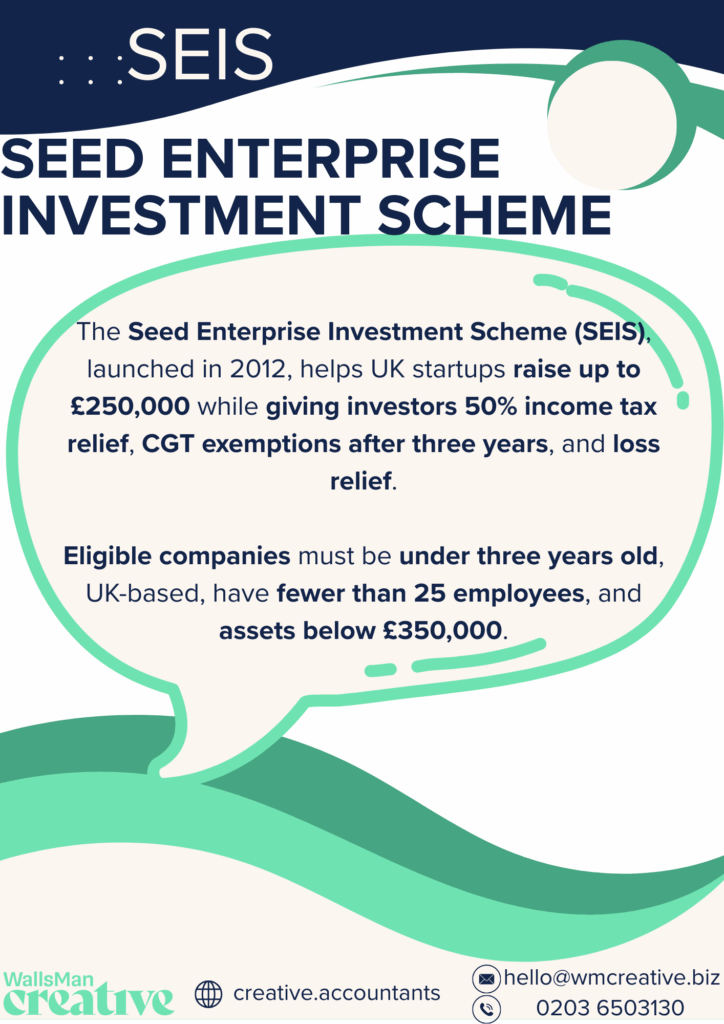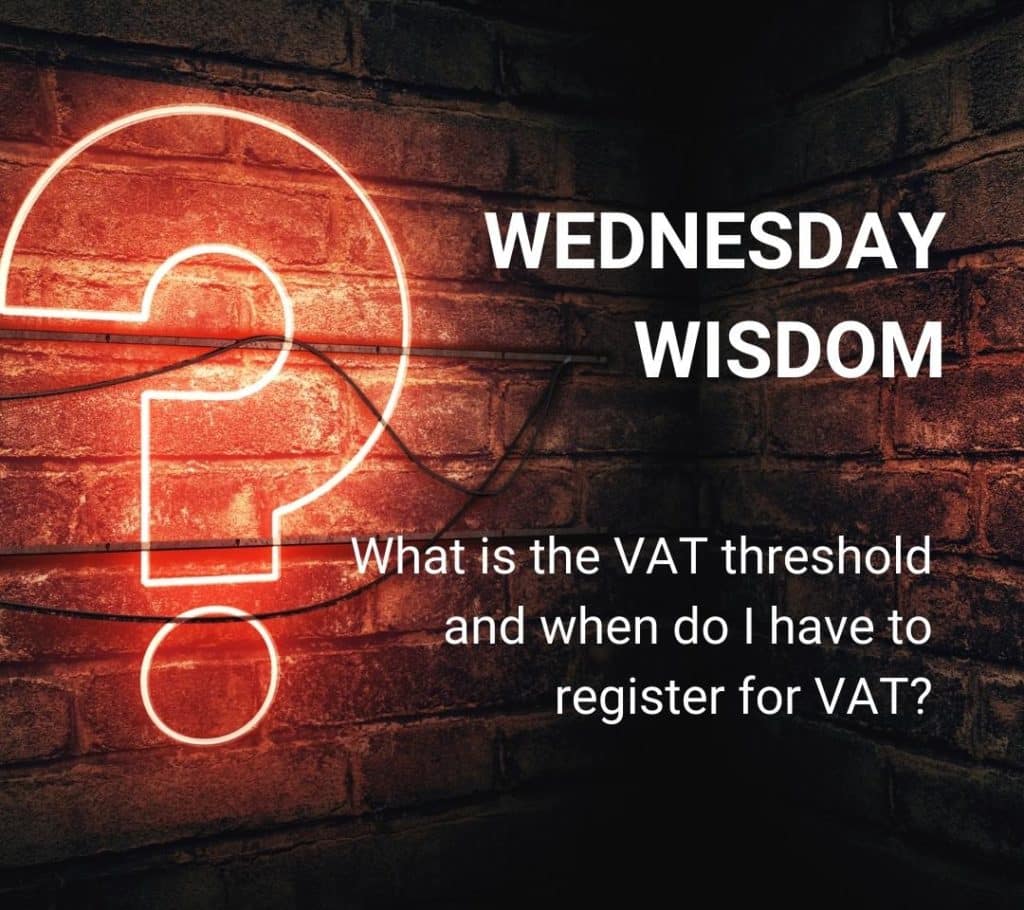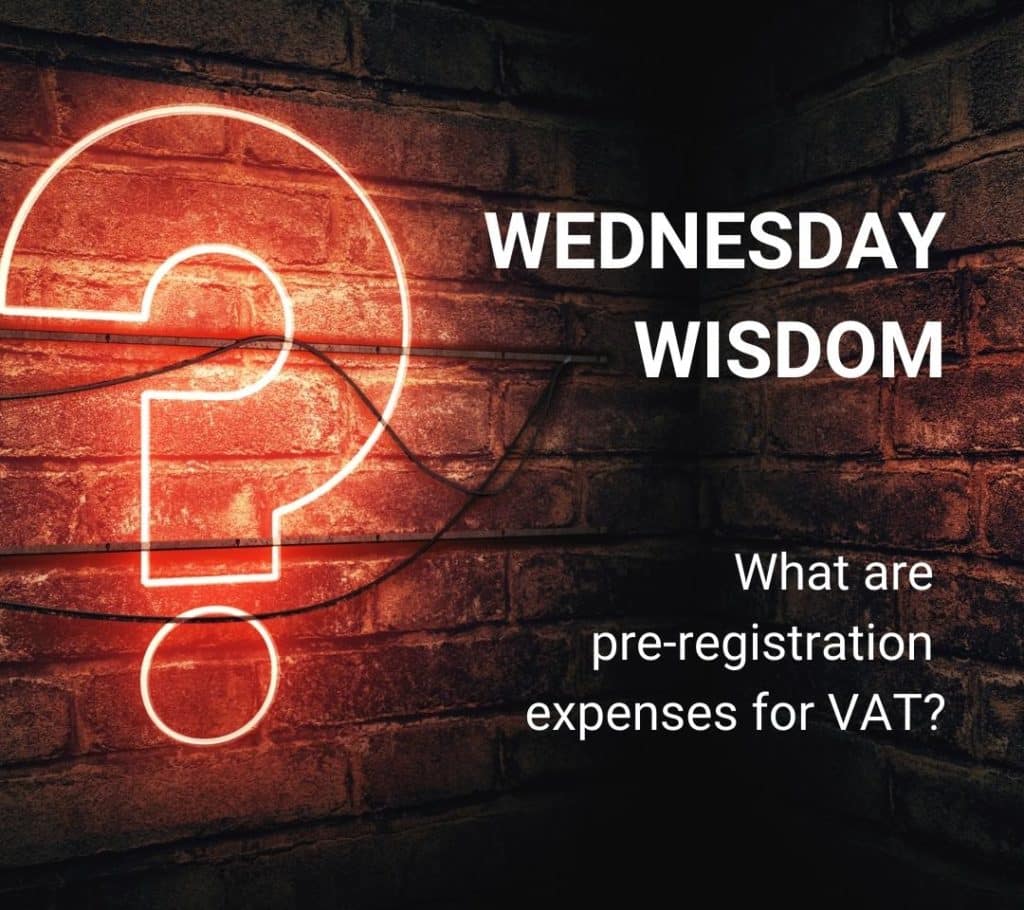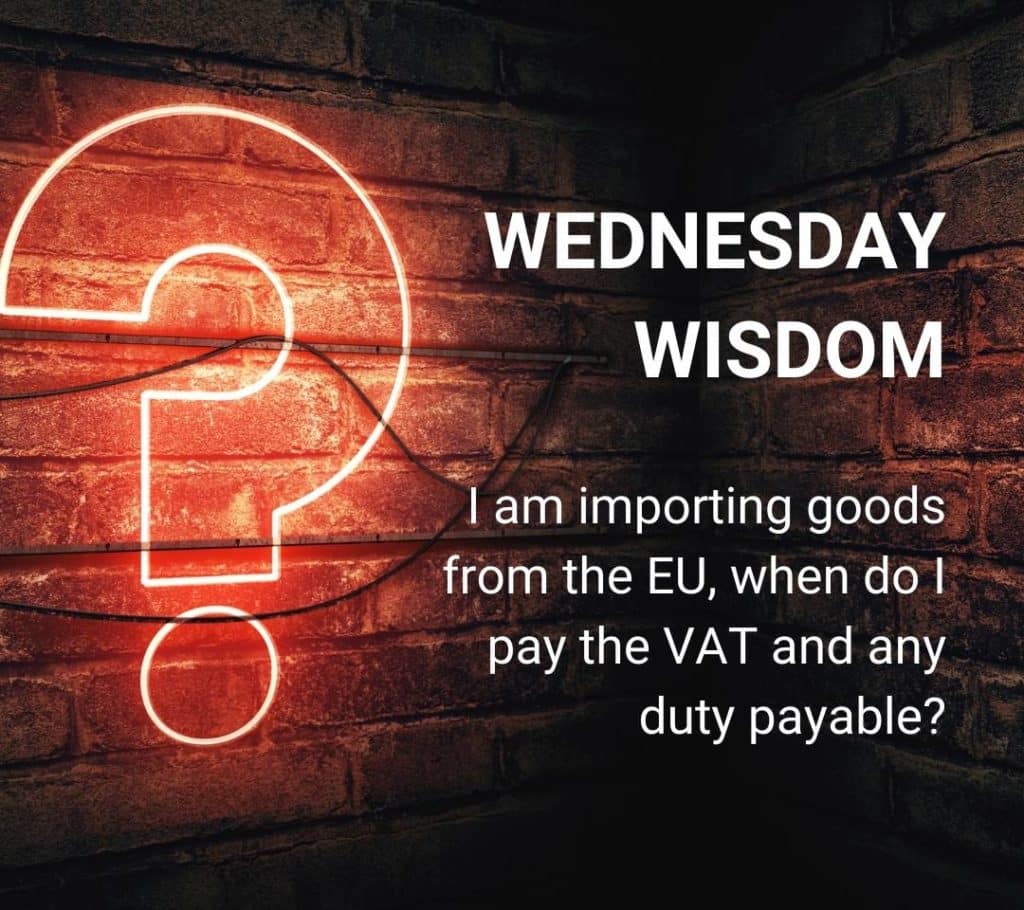The Seed Enterprise Investment Scheme (SEIS) is a government-backed initiative that supports early-stage businesses in the United Kingdom.
The Seed Enterprise Investment Scheme offers generous tax reliefs to investors. SEIS helps startups raise the capital they need to grow. At the same time, it reduces the financial risk for investors.
SEIS was introduced to support innovation and to make it easier for young businesses to secure funding.
The scheme benefits two main groups:
- startups
- individuals.
The startup gets a compelling incentive to attract investors, helping a lot with the fundraising process, while investors benefit from reduced exposure to risk and the potential for favourable tax advantages.
Creative Takeaways
- The Seed Enterprise Investment Scheme (SEIS) helps UK startups raise up to £250K in early-stage funding.
- Investors can claim up to 50% income tax relief and benefit from CGT-free gains.
- SEIS is government-backed and designed to support innovation across qualifying trades.
- Startups must meet strict criteria, including age, size, and trade limitations.
- Loss relief and other protections make SEIS a powerful incentive for early-stage investors.
Table of contents
1. What is Seed Enterprise Investment Scheme (SEIS)?
The Seed Enterprise Investment Scheme (SEIS) started in 2012 as a government response to the funding gap faced by early-stage companies.
Traditional funding options (bank loans and venture capital), are often out of reach for new businesses with limited trading history. SEIS makes it more attractive for private investors to support young companies.
The scheme allows startups to raise up to £250,000, while investors can claim up to 50% income tax relief on their investment. If the shares are held for at least three years, any gains made can be free from capital gains tax.
A sharetech platform called Vestd has a really good video on how SEIS UK works:
If the company fails, investors can reduce losses through loss relief.
SEIS targets businesses that are:
- less than three years old
- have fewer than 25 employees
- own less than £350,000 in gross assets at the time of the share issue.
These conditions ensure that the scheme supports genuinely early-stage businesses.
Let’s say you have a technology startup. The startup develops a mobile app. And this startup could use SEIS to secure the funding needed to complete development and launch the product.
The investor benefits from immediate tax relief, and if the company grows, they benefit from tax-free returns. It’s that simple.
The main goal of SEIS is to create an environment where innovation can thrive: giving the funds needed to move a sparking idea to the market. All the while it gives investors a measured protection for their investment.
2. Benefits of SEIS for startups
- Easier fundraising: SEIS makes your company more appealing to investors, helping you secure early-stage funding faster.
- Increased investor interest: Strong tax incentives attract individuals who might otherwise avoid high-risk startups.
- Supports growth: With more capital, startups can develop products, hire teams, and expand into new markets.
3. Benefits of SEIS for investors
- Income tax relief: Claim up to 50% of your investment (up to £200,000 per year) as a deduction on your income tax bill.
- Capital gains tax exemption: No CGT on profits if shares are held for at least three years.
- Loss relief: Offset losses against your income or capital gains if the company doesn’t succeed.
- CGT reinvestment relief: Defer gains from other assets by reinvesting into SEIS-eligible companies (up to £100,000 per year).
- Inheritance tax relief: Shares may qualify for 100% IHT relief after two years.
4. Benefits of SEIS for economic growth
SEIS contributes to economic growth by helping small businesses grow and create jobs.

The Seed Enterprise Investment Scheme encourages more innovation across different sectors like technology, healthcare, or creative industries.
5. Are you SEIS eligible?
Just as with the benefits of SEIS, the eligibility criteria is also different based on whether you are a company, or an investor.
How to qualify for SEIS as a company
To qualify for the Seed Enterprise Investment Scheme (SEIS), a company must meet the following conditions:
- Must have been trading for less than three years
- Must have no more than £350,000 in gross assets before the share issue
- Must employ fewer than 25 full-time equivalent staff
- Must be based in the UK
- Must not be listed on a recognised stock exchange
- Must be engaged in a qualifying trade
- Certain activities are excluded: banking, insurance, dealing in land
- Funds raised through SEIS must be used for growth activities:
- Product development
- Market expansion
- Hiring staff
- The funds must be spent within three years of the share issue
Check SEIS investment eligibility
To qualify for SEIS tax relief, investors must meet the following requirements:
- Investors must not be employees of the company at the time of investment
- Directors may qualify, but not regular employees
- An investor must not control more than 30% of the company’s:
- Share capital
- Voting rights
- Assets
- The investment must be a genuine commercial transaction
- The investor’s capital must be genuinely at risk
- Investors can invest up to £200,000 in SEIS-qualifying companies per tax year
6. How to apply for SEIS: step-by-step guide
Step 1: Check eligibility
Confirm that your company meets the SEIS requirements for company size, age, assets, trade type, and use of funds.
Step 2: Apply for advance assurance
Apply to HMRC for Advance Assurance. This provides provisional confirmation that your company is likely to qualify, giving investors greater confidence.
Step 3: Issue shares
After securing investment, issue new ordinary shares. These must be full-risk shares that are fully paid up and have no special rights.
Step 4: Submit SEIS1 compliance statement
Once shares are issued and either 70% of the money has been used or four months of trading have passed, submit the SEIS1 compliance statement to HMRC.
Step 5: Receive SEIS3 certificates
HMRC will issue SEIS3 certificates when the SEIS1 form is accepted. Investors need these certificates to claim their tax reliefs.
Step 6: Keep compliance records
Keep thorough records showing how the funds have been used. The company must continue to meet SEIS conditions for at least three years after the shares are issued.
You can check all the details of how to apply for SEIS on HMRC’s guide.
7. WM Creative helps claim SEIS and other tax advantages
Advance Assurance makes a huge difference when raising money under SEIS. What is it?
We touched that subject in this article, too, but feel free to reach out, so we can explain in details!
Submitting a complete and accurate Advance Assurance application can improve fundraising outcomes.
WallsMan Creative can manage the entire SEIS process for you. From preparing your Advance Assurance request to issuing shares and submitting SEIS1 forms, we help you stay compliant at every step.
If you are planning to raise funds under SEIS, get in touch. Our team will handle the paperwork so you can focus on running your business.
PS. If you’re hesitant whether you have to apply for SEIS or EIS, check our dedicated SEIS vs EIS blog post.




